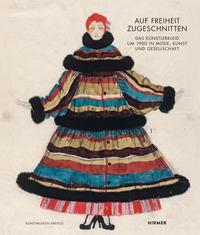Tailored For FreedomThe Artistic Dress Around 1900 in Fashion, Art and Society–Kaiser Wilhelm Museum
In August 1900, the first exhibition of artistic reform dresses in Germany was shown in Krefeld: Inspired by Friedrich Deneken, the founding director of the Kaiser Wilhelm Museum, dress designs by renowned artists were displayed, amongst them Henry van de Velde, Alfred Mohrbutter, Richard Riemerschmid and Margarete von Brauchitsch.
A reform of women’s fashion and women’s culture, one of the main concerns of which was the pros and cons of the corset, had already been fought for decades earlier, now yet another, fundamentally new aspect was added. Women’s fashion should no longer be just comfortable and healthy, in accordance with the basic idea of the “life reform”, but should furthermore be subject to an aesthetically sophisticated design?created by artists. Beauty became a “weapon” and the dress part of the Gesamtkunstwerk aesthetic of all walks of life. The young avant-garde, who regarded expression and emotion the essence of art, declared the self-designed dress an autonomous artwork, which transferred the sentiment as a movement into space. Prior to the First World War, artistic dress in all its varying manifestations becomes a focal point of the extensive European Reform movements.
The opulent exhibition combines works from the collection with numerous high-quality international as well as German loans into a vivid presentation. The exhibition at the Kunstmuseen Krefeld examines for the first time the European networks as well as the complex interrelations between art, fashion, photography and dance in the context of the Reform movement between 1900 and 1914. It offers a panorama of early modernity from the Pre-Raphaelites to the Gesamtkunstwerk design of the Art Nouveau, the Wiener Werkstätte, and the Expressionists; from expressionist dance to the new media of presentation and dissemination such as photography, film, poster and fashion illustration.
The exhibition will be accompanied by a richly illustrated catalogue published by Hirmer Verlag, edited by Ina Ewers-Schultz and Magdalena Holzhey.
Artists in the exhibition: Léon Bakst, Giacomo Balla, Vanessa Bell, Edward Burne-Jones, Walter Crane, Sonia Delaunay, Clotilde von Derp, Isadora Duncan, Emilie Flöge, Mariano Fortuny, Josef Hoffmann, Ludwig von Hofmann, Wassily Kandinsky, Gustav Klimt, Mela Köhler, Frances Macdonald MacNair, August Macke, Ditha Moser, Koloman Moser, Gabriele Münter, Anna Muthesius, Else Oppler, Paul Poiret, Johan Thorn Prikker, Richard Riemerschmid, Dante Gabriel Rossetti, Emmy Schoch, Johan Thorn Prikker, Henry und Maria van de Velde, Heinrich Vogeler, Edouard Vuillard and many more.
Curators
Dr. Ina Ewers-Schultz and Dr. Magdalena Holzhey
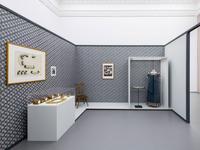
Photo: Dirk Rose
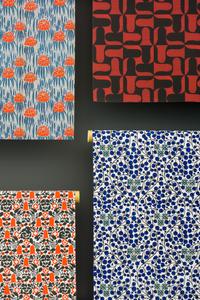
Photo: Dirk Rose
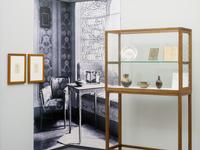
Photo: Dirk Rose
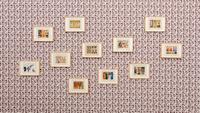
Photo: Dirk Rose
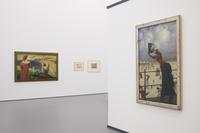
Photo: Dirk Rose
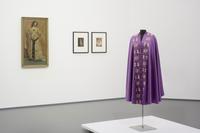
Photo: Dirk Rose
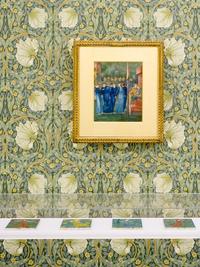
The King’s Wedding, 1870
Gouache, heightened with gold, on vellum/parchment
Clemens Sels Museum Neuss
Installation shot "Tailored for Freedom. The Artistic Dress around 1900 in Fashion, Art and Society", Kunstmuseen Krefeld, Kaiser Wilhelm Museum, October 12, 2018 - Februar 24, 2019
Photo: Dirk Rose
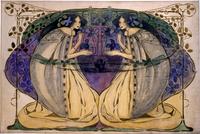
Spring, 1900–1905
Watercolor on linen, 83 × 124 cm
The Hunterian, University of Glasgow
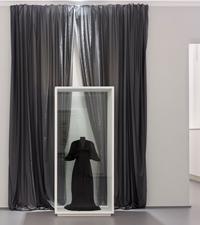
Delphos Dress, ca. 1911
Black silk, pleated, L 150 cm
Stiftung August Ohm Hamburg
Installation shot "Tailored for Freedom. The Artistic Dress around 1900 in Fashion, Art and Society", Kunstmuseen Krefeld, Kaiser Wilhelm Museum, October 12, 2018 - Februar 24, 2019
Photo: Dirk Rose
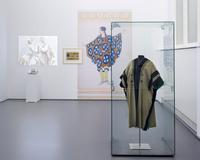
Photo: Dirk Rose
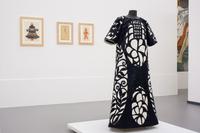
Photo: Dirk Rose
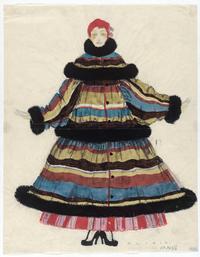
Design for a coat, 1914
Pencil and watercolor on paper, 38.3 × 30.2 cm MAK – Österreichisches Museum für angewandte Kunst / Gegenwartskunst
Photo: MAK
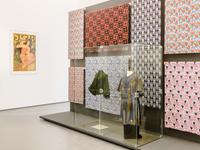

Robe simultanée (Simultaneous Dress), 1913
Patchwork of various fabrics, L 145 cm, W 47 cm
Private collection
© Pracusa 2018652
Installation shot "Tailored for Freedom. The Artistic Dress around 1900 in Fashion, Art and Society", Kunstmuseen Krefeld, Kaiser Wilhelm Museum, October 12, 2018 - Februar 24, 2019
Photo: Dirk Rose
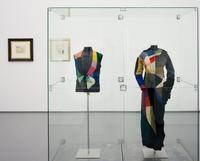
Robe simultanée (Simultaneous Dress), 1913
Patchwork of various fabrics, L 145 cm, W 47 cm
Private collection
© Pracusa 2018652
Installation shot "Tailored for Freedom. The Artistic Dress around 1900 in Fashion, Art and Society", Kunstmuseen Krefeld, Kaiser Wilhelm Museum, October 12, 2018 - Februar 24, 2019
Photo: Dirk Rose
